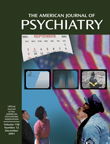To the Editor: John H. Halpern, M.D., and Harrison G. Pope, Jr., M.D.
(1), drew attention to the immense quantity of information about hallucinogens on the Internet. I would like to add the following comments based on my recent review of many of the same Internet sites
(2).
There are a number of hallucinogens not mentioned in the article by Drs. Halpern and Pope that are discussed at Internet drug information sites. These include the lysergic acid amide sources Ipomoea violacea and Argyreia nervosa, numerous additional botanical sources of dimethyltryptamine (DMT), sources of reversible monoamine oxidase inhibitors (not hallucinogenic per se but used in combination with dimethyltryptamine to make it effective when taken orally, as in ayahuasca), Amanita muscaria, nutmeg, ketamine, and dextromethorphan. Anticholinergic agents, which cause hallucinations as a feature of anticholinergic delirium, are also discussed, including a number of nightshade species, dimenhydrinate, and diphenhydramine.
In addition, a number of nonhallucinogenic drugs receive considerable coverage at Internet drug information sites. These include marijuana, 3,4-methylenedioxymethamphetamine (MDMA, or Ecstasy), γ-hydroxybutyric acid (GHB), kava-kava, stimulants (both naturally occurring and synthetic), and nitrous oxide. It is also interesting that certain other widely used drugs receive very little attention on the Internet: alcohol, opiates, sedative-hypnotics other than those mentioned, and inhalants other than nitrous oxide.
Much of the information at the major drug information sites is quite accurate. I reviewed information at three drug information libraries about drug effects, biological sources of psychoactive compounds, and synthesis and extraction procedures. No inaccuracies were found, although some of the synthesis and extraction procedures could not be verified.
I also reviewed the medical literature (MEDLINE, from January 1996 to April 1999) for references to the lesser-known substances discussed at Internet drug information sites. Most of the reports dealt with acute medical problems related to substance use, although a few dealt with long-term misuse. I found no reports of problems involving any of the lesser-known hallucinogens discussed by Drs. Halpern and Pope, although one article discussed the potential for interactions between ayahuasca and selective serotonin reuptake inhibitors. In contrast, there were seven reports dealing with use of GHB, five on dextromethorphan, five on various anticholinergic nightshade species, five regarding nutmeg, three on kava-kava, and one each regarding ketamine, dimenhydrinate, diphenhydramine, 2-CB (a synthetic serotonergic hallucinogen), and absinthe.
These reports shed some light on the extent of acute medical problems but reveal less about abuse and dependence and nothing about the extent of nonproblematic use of any of these substances. Furthermore, existing reports tell us little about the possible role of the Internet in promoting the use of novel substances or well-established substances such as methamphetamine, Ecstasy, and marijuana. Surveys, particularly in high-risk populations such as students, would be a useful next step in determining the prevalence of use, abuse, and dependence for the various novel drugs and to elucidate the relationship between drug use and exposure to Internet drug information.

